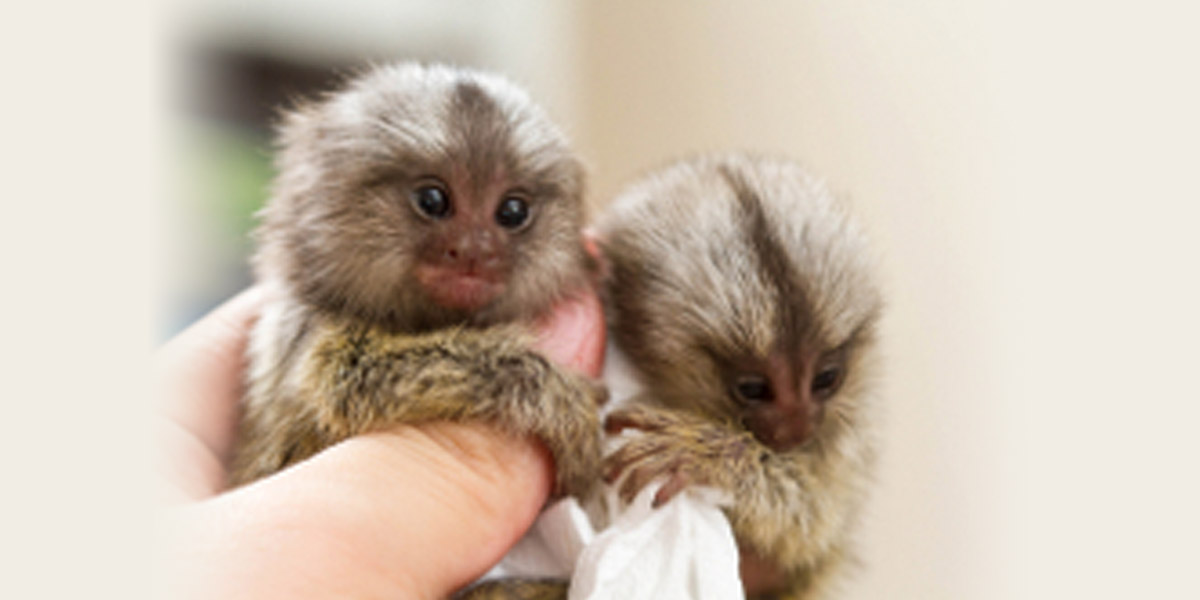Hendrickson, A., Possin, D., Kwan, W.C., Huang, J, and Bourne, J.A. 2016, The temporal profile of retinal cell genesis in the marmoset monkey.
Associated Institutions: Monash University (and the University of Washington)
Overview
According to the researchers publication, the marmoset monkey has a relatively short gestational period compared with other primates but possesses a retina at a similar stage of maturation by birth.
Studies previously have shown that the marmoset monkey undergoes a more rapid postnatal development as compared to the macaque monkey, reaching a mature stage earlier.
Therefore researchers at Monash University (in collaboration with the University of Washington) are studying neuron development in marmoset fetuses and newborns in order to compare them with the macaque monkey.
The Experiment
Five female marmosets and their respective male partners (4-9 years of age) were obtained from the federally funded National Non-Human Primate Breeding Research Facility in Gippsland, Victoria. This establishment breeds primates specifically for their use in medical laboratories around the country.
In order to label cells, five pregnant marmosets were injected intraperitoneally over 24 hours. A single live birth occurred for each female.
These newborns were anesthetized on the day of birth or up to 3 days later. Their eyes and cerebral tissues were removed. Inner retinal neurons were observed and tissue processing and imaging was undertaken.
Relevance to humans
Nowhere in the publication do the researchers mention the relevance to humans but simply compare the retinal development of the newborn marmosets they have used and compared them to macaques.
They note that a marked difference is the time of neuron generation onset between marmosets and macaques but state it is not known exactly when marmoset neuronal generation stops.
Animal welfare concerns
Marmosets naturally live in family groups of 10-15 individuals, are day-active, and in the wild would inhabit the upper canopy of forested areas. The primates used in this experiment were housed in a primate breeding facility in Gippsland specifically designed for breeding for use in scientific experiments.
In this experiment five partners were taken from the facility to be used. After the female marmoset had given birth the neonate was taken away.
Animal welfare concerns include questions about what happened to the female after the removal of her baby? Was she used to breed again for other dubious experiments? What did this removal do to the social structures? What impact did it have on the partners and others from the establishment? Marmosets are known to forge family bonds.
Funding and cost benefit analysis
According to the researchers’ publication, Australian funding for this research included a National Health & Medical Research Council Grant (APP 1042893) to James Bourne for $817,358 and also a NHMRC Senior Research Fellowship (APP177677) to James Bourne for $122,329 per year (for 5 years from 2015-2019).
Despite this huge outlay in taxpayers dollars and resources it appears to show no translatable value to humans and only highlights differences between two species of primates; the marmoset and the macaque.
Australian researchers appear to be constantly wasting precious resources (financial and animal lives) in trying to find the answers to human ailments in the non-human model.
Millions of dollars are wasted attempting to replicate the human physiology in a non-human animal such as the monkey when it will invariably fail.
References
The temporal profile of retinal cell genesis in the marmoset monkey Hendrickson, A., Possin, D., Kwan, W.C., Huang, J, and Bourne, J.A. (2016) 524:119-1207

